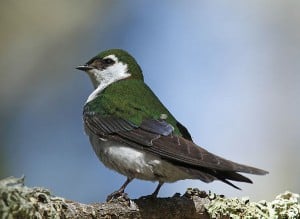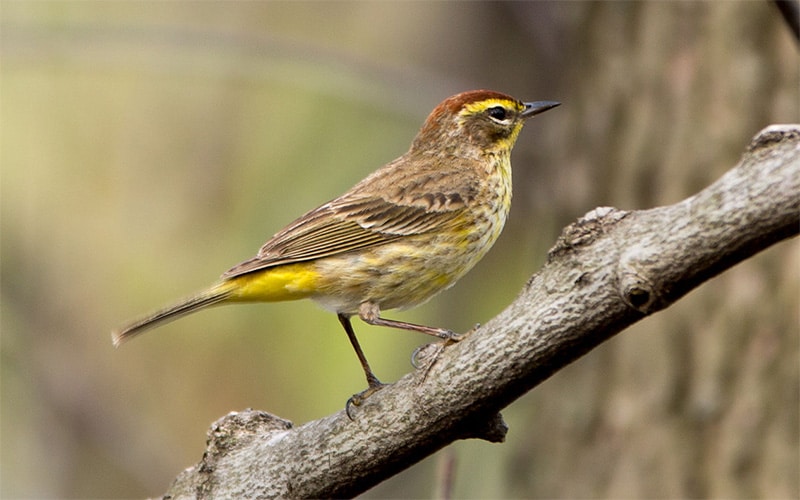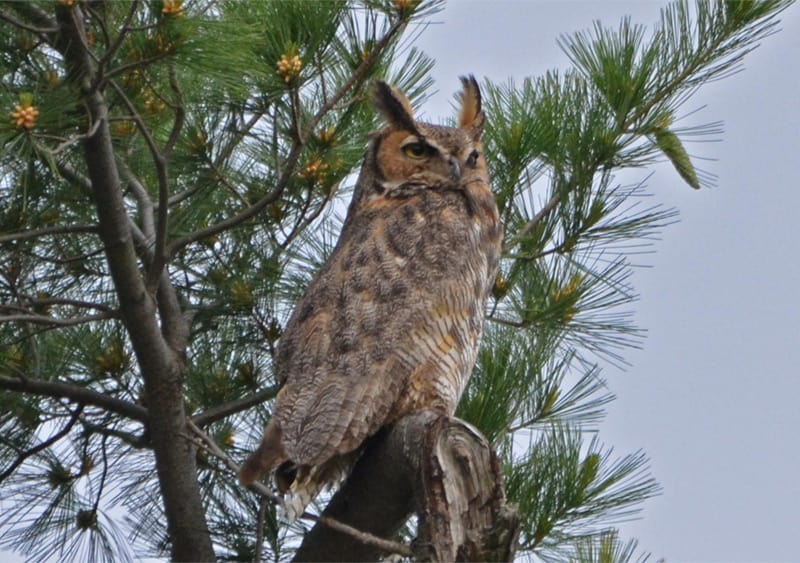Look For
The male Cape May warbler has yellow underparts with black stripes on its sides and breast. It has a dark head and yellow face with brown patches on the side of its head around the eyes. White patches on the wings and tail make it distinctive. The female also has white patches on the wings and tail but with far less color. She will have a white-yellow breast with gray stripes on her sides and breast.
Listen For
This warbler will sing three steet steet steet notes with the pitch rising on every note. Call is a chip noise.
Find It
The Cape May warbler breeds in the extreme northeastern United States and throughout much of Canada, and winters in the Caribbean and Virgin Islands, migrating down the eastern part of the US. When breeding, it can be found in coniferous forests.
Feeding Behavior
This warbler likes to find invertebrates near the tops and outside layer of trees. A favorite insect to eat is the spruce budworm. In winter, it will supplement its diet with berries and nectar along with insects. While they do hawk insects from the air, they mostly glean from the tree while perched on the branches. To collect the nectar and juices for the winter, this warbler has a curled tongue.
Nesting Behavior
The nest will be built in a tree, usually in an open area or along the edge of a thick area of forest. The outer layer of the cup will be constructed of bark, twigs, and grasses while the inside will be lined with plants, feathers, and hair. The cape may warbler will have four to nine eggs, white in color with dull red spots.
Wow!
Although Alexander Wilson named the species for a bird in Cape May, New Jersey, the same bird wasn’t spotted again in that area for more than one hundred years.




